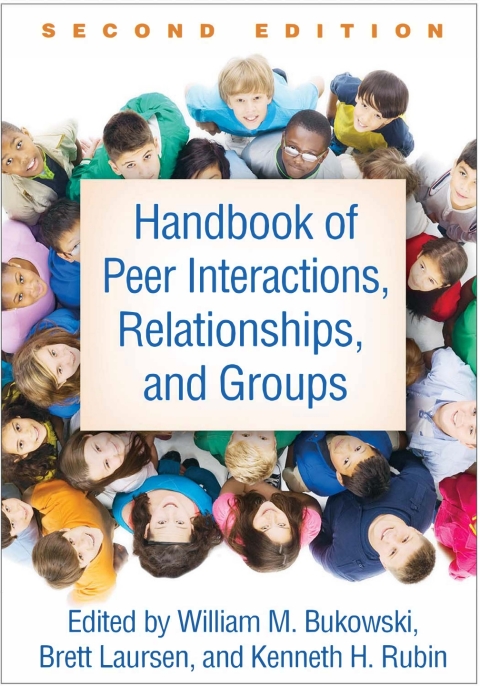Description
Efnisyfirlit
- Half Title Page
- Title Page
- Copyright
- Dedication
- About the Editors
- Contributors
- Preface
- Contents
- Part I. Introduction
- Chapter 1. Peer Relations: Past, Present, and Promise
- Part II. Conceptual Origins of Peer Research
- Chapter 2. Socioethological/Developmental Principles and Perspectives on Peer Interactions, Relation
- Chapter 3. Pathways, Networks, and Norms: A Sociological Perspective on Peer Research
- Chapter 4. Sociometric Perspectives
- Chapter 5. The Peer Group: Linking Conceptualizations, Theories, and Methods
- Chapter 6. Evolution and Peer Relations: Considering the Functional Roles of Aggression and Prosocia
- Chapter 7. Peer Relations and Psychosocial Development: Perspectives from Genetic Approaches
- Chapter 8. Peers and the Self
- Part III. Individual Characteristics and Peer Interactions
- Chapter 9. Personality and Peer Relationships
- Chapter 10. Neuroscience and Peer Relations
- Chapter 11. The Beginnings of Peer Relations
- Chapter 12. Children’s Play and Peer Relations
- Chapter 13. Prosocial Behavior with Peers: Intentions, Outcomes, and Interpersonal Adjustment
- Chapter 14. Conflict between Peers
- Chapter 15. The Interface of Aggression and Peer Relations in Childhood and Adolescence
- Chapter 16. Bullying and Victimization
- Chapter 17. Avoiding and Withdrawing from the Peer Group
- Part IV. Dyads and Groups
- Chapter 18. Parent–Child Attachment and Peer Relations
- Chapter 19. Friendship in Childhood and Adolescence: Features, Effects, and Processes
- Chapter 20. Differences and Similarities: The Dynamics of Same- and Other-Sex Peer Relationships
- Chapter 21. The Romantic Relationships of Youth
- Chapter 22. Peer Acceptance, Peer Rejection, and Popularity: Social-Cognitive and Behavioral Perspec
- Chapter 23. Peer Influence
- Chapter 24. Intergroup Exclusion, Moral Judgments, and Social Cognition
- Part V. Diversity in Peer Experience
- Chapter 25. The Potential of Schools to Facilitate and Constrain Peer Relationships
- Chapter 26. Inequality and Neighborhood Effects on Peer Relationships
- Chapter 27. Social Media and Peer Relations
- Chapter 28. Culture and Peer Relationships
- Chapter 29. Gender and Peer Relationships
- Chapter 30. Race and Ethnicity in Peer Relations Research
- Part VI. Outcomes, Intervention, and Policy
- Chapter 31. Peer Status and Psychopathology
- Chapter 32. Peers, Academics, and Teachers
- Chapter 33. Peer-Based Interventions for Behaviorally Inhibited, Socially Withdrawn, and Socially An
- Chapter 34. Youth Activity Participation: An Ecological Peer-Based Approach for Positive Youth Devel
- Chapter 35. Public Policy and Peer Relationships
- Author Index
- Subject Index






Reviews
There are no reviews yet.